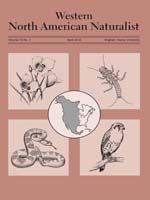Surveys for foliar ozone injury on cutleaf coneflower, spreading dogbane, and quaking aspen were conducted in Rocky Mountain National Park, Colorado, from 2006 through 2010. Foliar injury in the form of ozone stipple was found on coneflower each year. The incidence of injured plants on sites with injury ranged from 5% to 100%. The severity of injury on affected foliage was generally <4% but occurred on some leaves at a level greater than 12% in 3 years and in 1 year on 1 plant at a level >75%. No foliar ozone injury was found on spreading dogbane or quaking aspen in any year of the survey. This is the first documentation of ozone injury on vegetation in Rocky Mountain National Park. While ozone has long been a concern in the Colorado Front Range, spreading urbanization and oil and gas development are leading to increased levels of ozone in many areas in the Rocky Mountain region. Air monitoring data indicate that ozone exposures are exceeding injury thresholds in several locations and suggest that assessments of foliar ozone injury should be conducted on ozone-sensitive plant species in riparian and moist communities in those areas.
How to translate text using browser tools
1 April 2012
Foliar Ozone Injury on Cutleaf Coneflower at Rocky Mountain National Park, Colorado
Robert Kohut,
Colleen Flanagan,
James Cheatham,
Ellen Porter
ACCESS THE FULL ARTICLE

Western North American Naturalist
Vol. 72 • No. 1
April 2012
Vol. 72 • No. 1
April 2012




